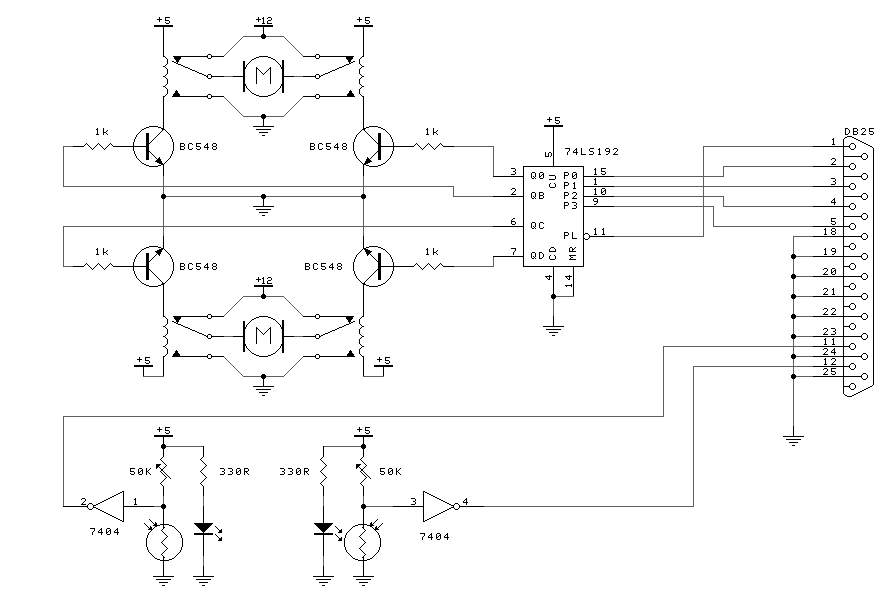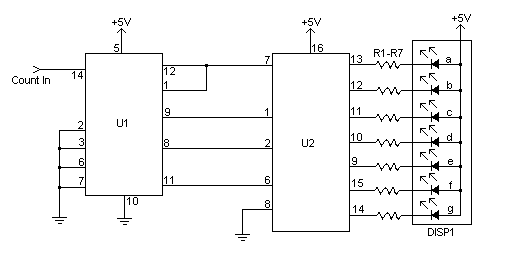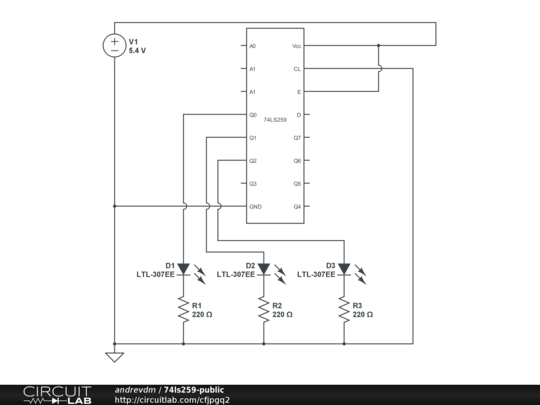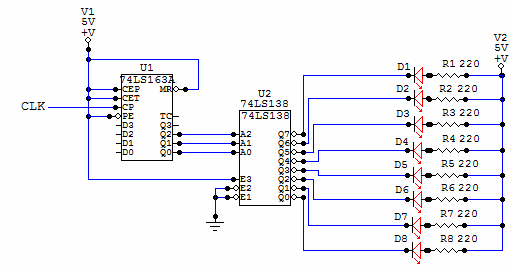
74LS Datasheets
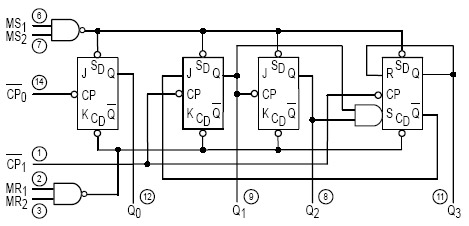
A four-button RF remote control is designed to independently turn ON and OFF four different devices. Each of the four outputs can be configured to operate independently in either toggle or momentary mode. The outputs are buffered using BC549 NPN transistors, enabling them to drive low-voltage devices directly or connect to 5V or 12V relays (or motors) for controlling appliances that operate on 110V or 220V mains voltage, or any voltage of choice. Multiple remote systems can function independently to control more than four appliances in the same area by modifying the address code on the 433MHz receiver and remote. Additionally, it is feasible to use several remotes to control the same appliance, such as a garage door.
The four-button RF remote control system operates on a frequency of 433 MHz, which is commonly used for remote control applications due to its effective range and reliability. The system consists of a transmitter (the remote) and a receiver unit that can be interfaced with various devices. Each button on the remote corresponds to a specific output channel on the receiver, allowing users to control multiple devices with a single handheld unit.
The configuration options for the outputs are significant for versatile applications. In toggle mode, pressing the button alternates the state of the output, turning the connected device ON if it is OFF, and vice versa. In momentary mode, the output remains active only while the button is pressed, which is useful for applications such as doorbells or temporary lighting.
The use of BC549 NPN transistors as buffers is a critical design choice. These transistors are capable of handling small loads directly, making them suitable for low-voltage devices. For higher power applications, the outputs can be connected to relays that can switch higher voltages, such as 110V or 220V, which are typical for household appliances. This flexibility allows the system to control a wide range of devices, from simple LED lights to larger motors or heating elements.
To expand the system's capabilities, users can modify the address codes of the receiver and remote. This feature allows multiple systems to coexist in the same environment without interference, enabling the control of more than four devices. Furthermore, the ability to use multiple remotes for a single appliance adds convenience, particularly in applications like garage doors, where multiple users may need access.
Overall, this RF remote control system provides a robust and flexible solution for wireless device management, integrating easily into various home automation setups while maintaining user-friendly operation.Four button RF remote is used to turn ON / OFF four different devices independently. Any of the four outputs can be configured to work independently in either toggle or momentary mode. Outputs are buffered by BC549 NPN transistors and can drive low voltage devices directly or be connected to either 5V or 12V relays (or motors) to control appliance s that use 110V / 220V mains voltage or any voltage of your choice. Multiple remote systems can be used independently to control more than four appliances in the same location by changing the address code on 433MHz receiver and remote. It is also possible to use several remotes to control the same appliance such as garage door. 🔗 External reference
The four-button RF remote control system operates on a frequency of 433 MHz, which is commonly used for remote control applications due to its effective range and reliability. The system consists of a transmitter (the remote) and a receiver unit that can be interfaced with various devices. Each button on the remote corresponds to a specific output channel on the receiver, allowing users to control multiple devices with a single handheld unit.
The configuration options for the outputs are significant for versatile applications. In toggle mode, pressing the button alternates the state of the output, turning the connected device ON if it is OFF, and vice versa. In momentary mode, the output remains active only while the button is pressed, which is useful for applications such as doorbells or temporary lighting.
The use of BC549 NPN transistors as buffers is a critical design choice. These transistors are capable of handling small loads directly, making them suitable for low-voltage devices. For higher power applications, the outputs can be connected to relays that can switch higher voltages, such as 110V or 220V, which are typical for household appliances. This flexibility allows the system to control a wide range of devices, from simple LED lights to larger motors or heating elements.
To expand the system's capabilities, users can modify the address codes of the receiver and remote. This feature allows multiple systems to coexist in the same environment without interference, enabling the control of more than four devices. Furthermore, the ability to use multiple remotes for a single appliance adds convenience, particularly in applications like garage doors, where multiple users may need access.
Overall, this RF remote control system provides a robust and flexible solution for wireless device management, integrating easily into various home automation setups while maintaining user-friendly operation.Four button RF remote is used to turn ON / OFF four different devices independently. Any of the four outputs can be configured to work independently in either toggle or momentary mode. Outputs are buffered by BC549 NPN transistors and can drive low voltage devices directly or be connected to either 5V or 12V relays (or motors) to control appliance s that use 110V / 220V mains voltage or any voltage of your choice. Multiple remote systems can be used independently to control more than four appliances in the same location by changing the address code on 433MHz receiver and remote. It is also possible to use several remotes to control the same appliance such as garage door. 🔗 External reference
